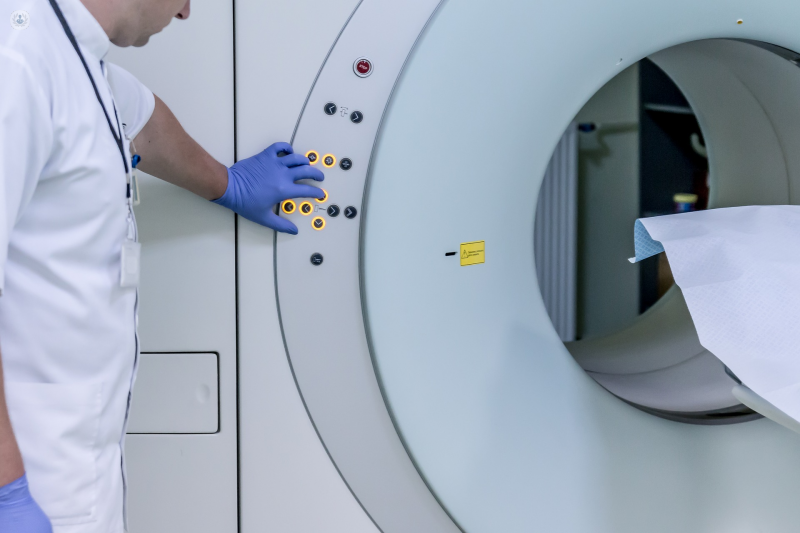Abdominal MRI
Dr Duncan Brennand - Interventional radiology
Created on: 07-23-2015
Updated on: 07-25-2023
Edited by: Conor Dunworth
An abdominal MRI is a type of scan which uses a magnetic field and radio waves to produce detailed images of the soft tissues in your abdomen. An MRI is carried out by a radiologist, and is a safe and pain-free procedure.

Why do I need an abdominal MRI?
An abdominal MRI is used to investigate:
- any issues with the lymph nodes
- the flow of blood in your body
- the cause of abdominal pain or swelling
- any tumours in abdominal organs such as the liver, spleen, pancreas or kidneys
The images from the MRI are often used to clarify the findings from previous tests and scans and can help to diagnose the following:
- issues with the kidney, such as infection, swelling, kidney stones, or kidney disease
- issues with the gallbladder
- cancer of the liver, pancreas, gallbladder or kidneys
- cardiovascular conditions such as an aortic aneurysm
- renal vein thrombosis
You might also need further tests or scans after the MRI for a doctor to confirm a diagnosis.
What to expect in an abdominal MRI
For a detailed look at how MRI tests work, what you can expect, and how to prepare, see our page on MRI scans.
You might be administered a special dye called gadolinium through an IV. This can help highlight the areas the doctor wants to scan. The dye is usually safe but there may be a risk if you have problems with your kidney. You should make your doctor aware of any pre-existing conditions before they give you the IV.
Depending on what the doctor wants to investigate, you might be asked not to eat or drink anything a few hours before the exam so that the pictures produced of your bowel can be as clear as possible.
The scan can take between 30 and 60 minutes.
If you’re wearing a pacemaker, the doctor might suggest an abdominal CT scan instead. This is because some pacemakers can be damaged by the magnetic field created by the MRI scanner.

